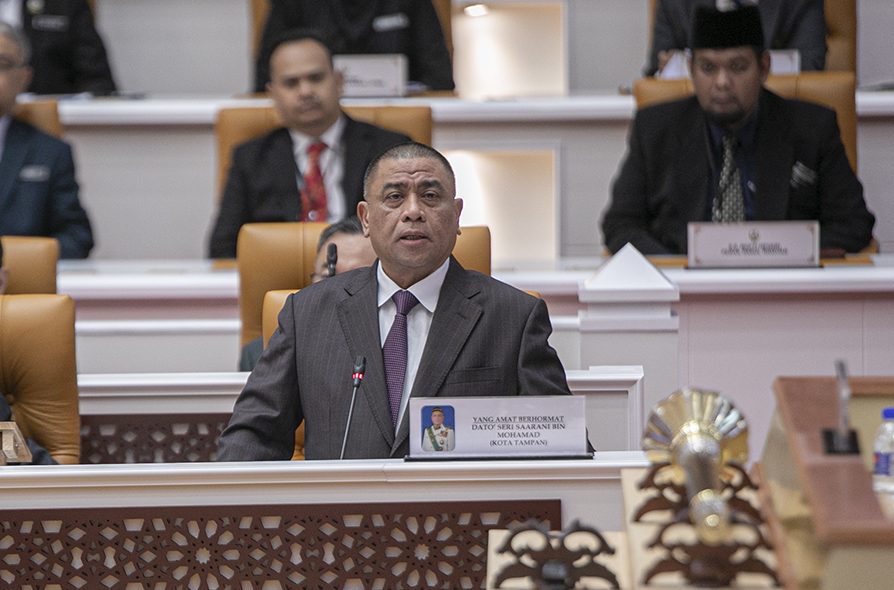IPOH: Perak’s economic performance has strengthened in 2023, achieving a gross domestic product (GDP) growth rate of 2.7% or RM82.6 bil.
Statistics Department chief statistician Datuk Seri Dr Mohd Uzir Mahidin said the state contributed 5.3% to the national GDP.
“In 2022, the state achieved RM80.4bil in GDP. The growth was driven by the services sector, which expanded by 3.0%, particularly in tourism-related subsectors such as wholesale and retail trade, food and beverages, and accommodation,” he said in a statement on Saturday (Aug 3).
“In terms of GDP per capita, Perak recorded RM37,170 in 2023, an increase from RM37,080 the previous year,” he added.
Dr Mohd Uzir said Perak had the fourth-highest number of domestic visitors in 2023, with 17.1 million, compared to 14.6 million in 2022.
He said that among the major attractions for domestic visitors were Pangkor, the Lost World of Tambun and Teluk Batik.
“Perak emerged in fourth place as the most visited state, receiving 7.50 million tourists, compared to 6.87 million in 2022.
Dr Mohd Uzir said Perak received an approved investment of RM8.5 bil in 2023.
He said it comprised RM6.4bil of domestic investment and RM2.1bil of foreign investment.
“The manufacturing sector was the second contributor to Perak’s economy. It received RM2.7bil in investment, which comprises RM1.9bil of foreign investment and RM800mil of domestic investment.
“This influx of investment is expected to stimulate the local economy and create numerous new job opportunities,” he said.
He added, “Aligned with sustainable economic growth and encouraging investment performance, the labour market in Perak continues to strengthen.”
Dr Mohd Uzir said the state’s labour force registered 1.15 million people in 2023, an increase of 2.7% from 1.12 million people in the previous year.
“The total number of employed people rose to 1.10 million, compared to 1.07 million in 2022.
“The Labour Force Participation Rate (LFPR) increased from 65.4% to 66% in 2023,” he said.
He added, “The unemployment rate improved to 3.9% in 2023 from 4.4% in the preceding year.”
Dr Mohd Uzir said the total trade recorded in Perak was RM66.2bil, which contracted 10.5% compared to the previous year. The exports and imports value was RM32.4bil in 2022 and RM33.8bil in 2023.
“The challenging global economic environment in 2023 impacted Malaysia’s total trade, which decreased by 7.3% compared to the previous year, with a value of RM2.6 trillion.
“Perak’s key exports were telecommunications equipment, parts, and accessories (RM4.8bil), electronic integrated circuits (RM4.0bil), and rubber gloves (RM2.7bil),” he said.
“Perak’s main export destination was the US, with exports valued at RM7.4bil, followed by China (RM5.5bil) and Singapore (RM2.2bil).
“The major imports were piezo-electric crystals and parts at RM4.4bil, followed by electronic integrated circuits (RM2.1bil) and telecommunications equipment, parts and accessories (RM1.1bil),” he said.
He added, “The primary sources of imports for Perak were Indonesia (RM7.0bil), China (RM6bil), and Brazil (RM3.8bil).”
Dr Mohd Uzir said the inflation rate in Perak also eased to 2.8% compared to 3.3% in 2022, with the index value reaching 126.4 in 2023 compared to 123 in 2022.
“It is consistent with the slower national inflation rate in 2023.
“Overall, the increase in inflation was driven by restaurants and hotels (5.9%), food and beverages (4.8%), recreation services and culture (3.8%), furnishings, household equipment and routine household maintenance (2.3%) and miscellaneous goods and services (2.2%),” he said.
He also said the population of Perak increased from 2.51 million in 2022 to 2.54 million in 2023, with an annual growth rate of 1%.
“The district of Kinta registered the highest population, 908,900, while Selama recorded the lowest population, 34,800.
“The majority of the population falls within the working age group of 15 to 64 years, accounting for 68.5%,” he said.
“This was followed by the young age group of zero to 14 years (21.8%), while the remaining percentage was in the old age group (9.7%),” he added.
Source: The Star Online




 © 2025. Hak cipta terpelihara.
© 2025. Hak cipta terpelihara.